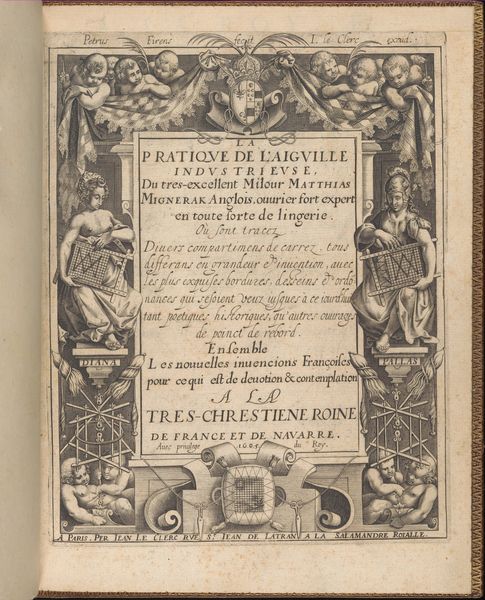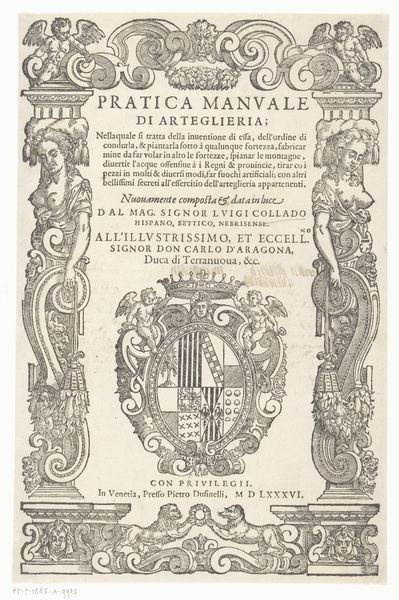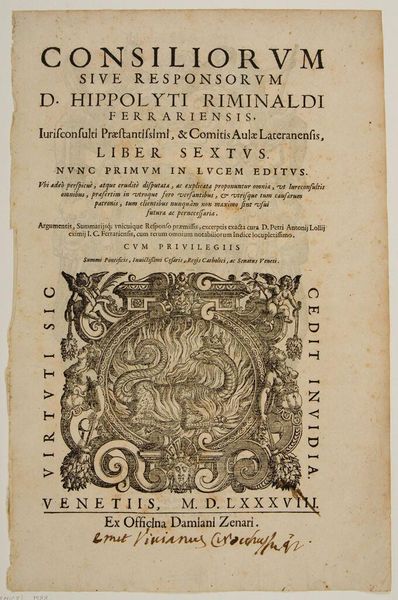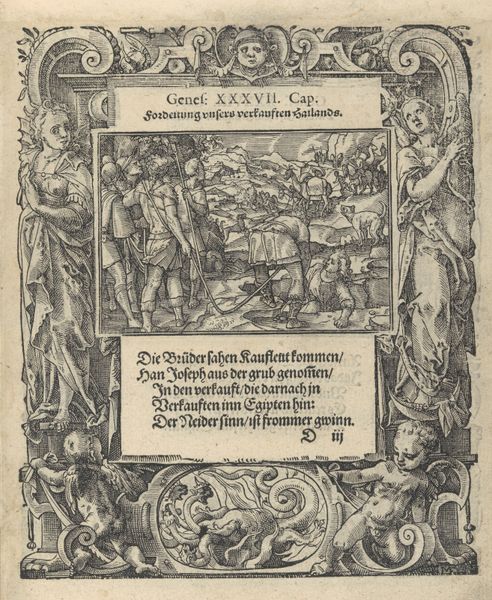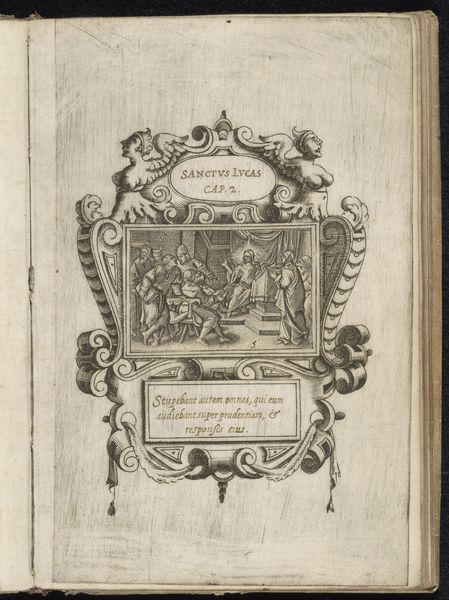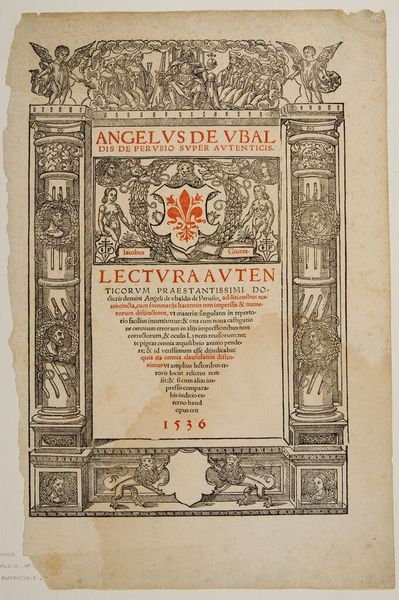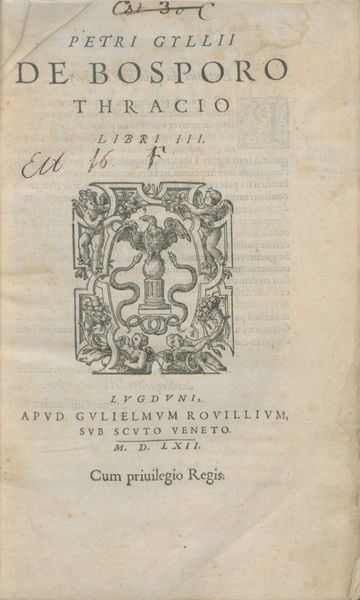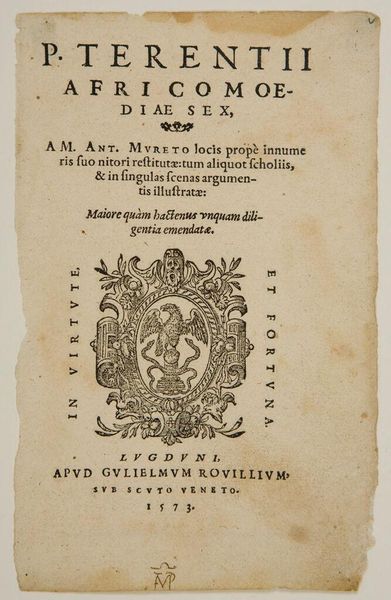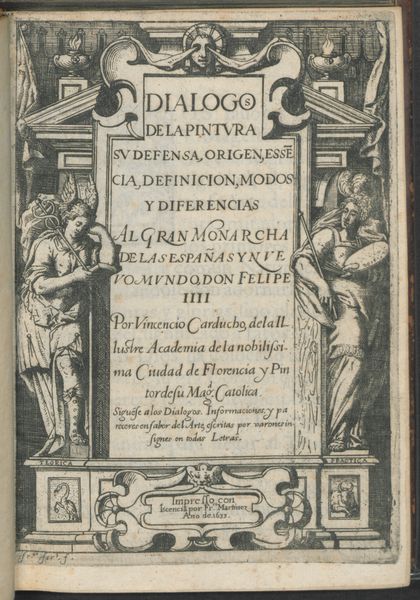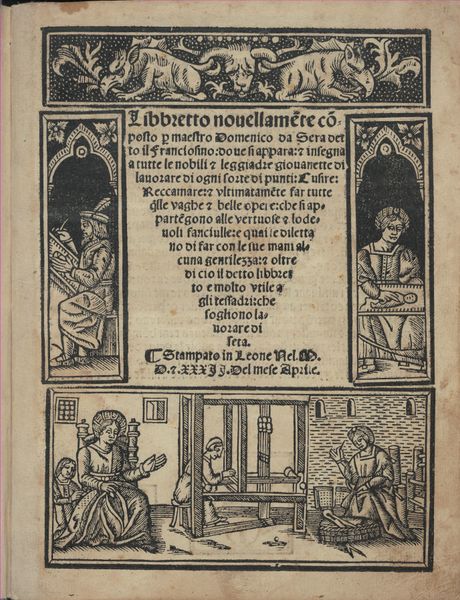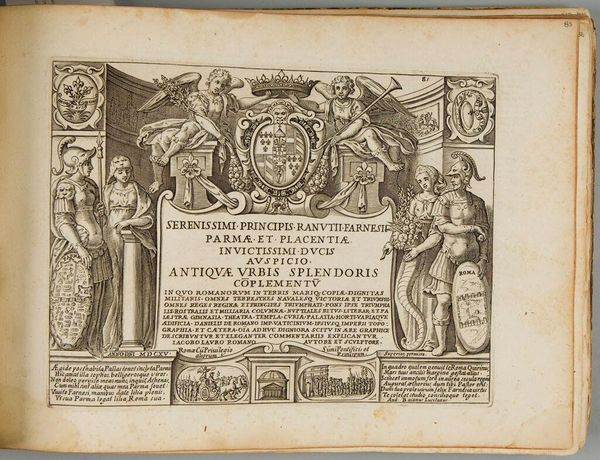
I) Symbolarum et Emblematum ex Aquatilibus et Reptilibus Desumptorum. Centuria Quarta. (1604) 1590 - 1605
0:00
0:00
Dimensions: 7 9/16 x 5 11/16 x 1 3/4 in. (19.2 x 14.5 x 4.5 cm)
Copyright: Public Domain
Joachim Camerarius the Younger created this densely ornamented title page in 1604, for a book cataloging symbols and emblems derived from animals. Born into a scholarly family during the Reformation, Camerarius worked within the intellectual milieu of 16th-century Nuremberg. These emblems offered moral and philosophical lessons, with animals embodying human traits. Consider how animals – real and imagined – have been used across cultures to define and reinforce social hierarchies. In early modern Europe, the popularity of emblem books coincided with burgeoning global trade and colonization. How might the representation of exotic creatures in books like this one have shaped European perceptions of the wider world and its inhabitants? The detailed engravings and Latin text speak to a learned audience. The symbolic creatures, from lions to squirrels, are interwoven with complex meanings. These images reflect a worldview where the natural world was a book to be read for moral instruction, inviting us to reflect on how humans have projected their values onto the animal kingdom.
Comments
No comments
Be the first to comment and join the conversation on the ultimate creative platform.
